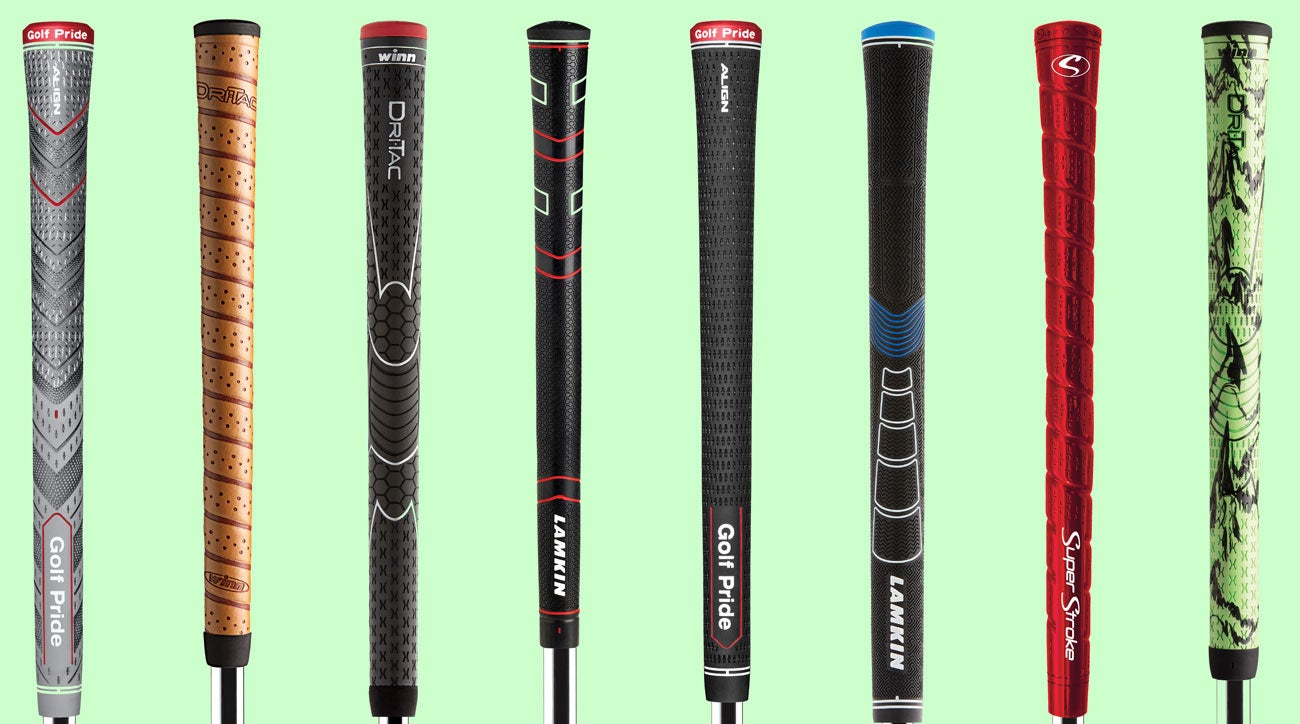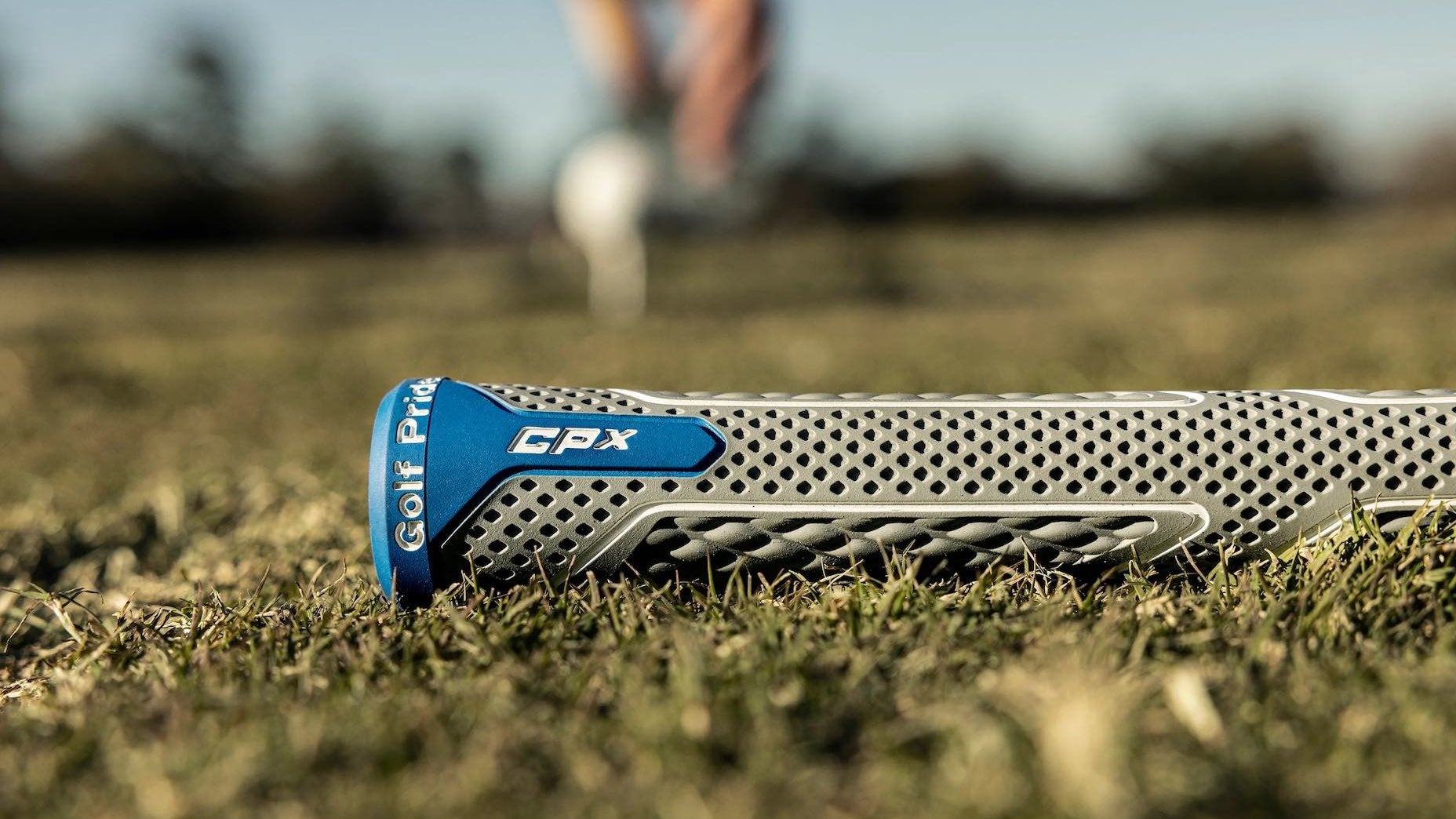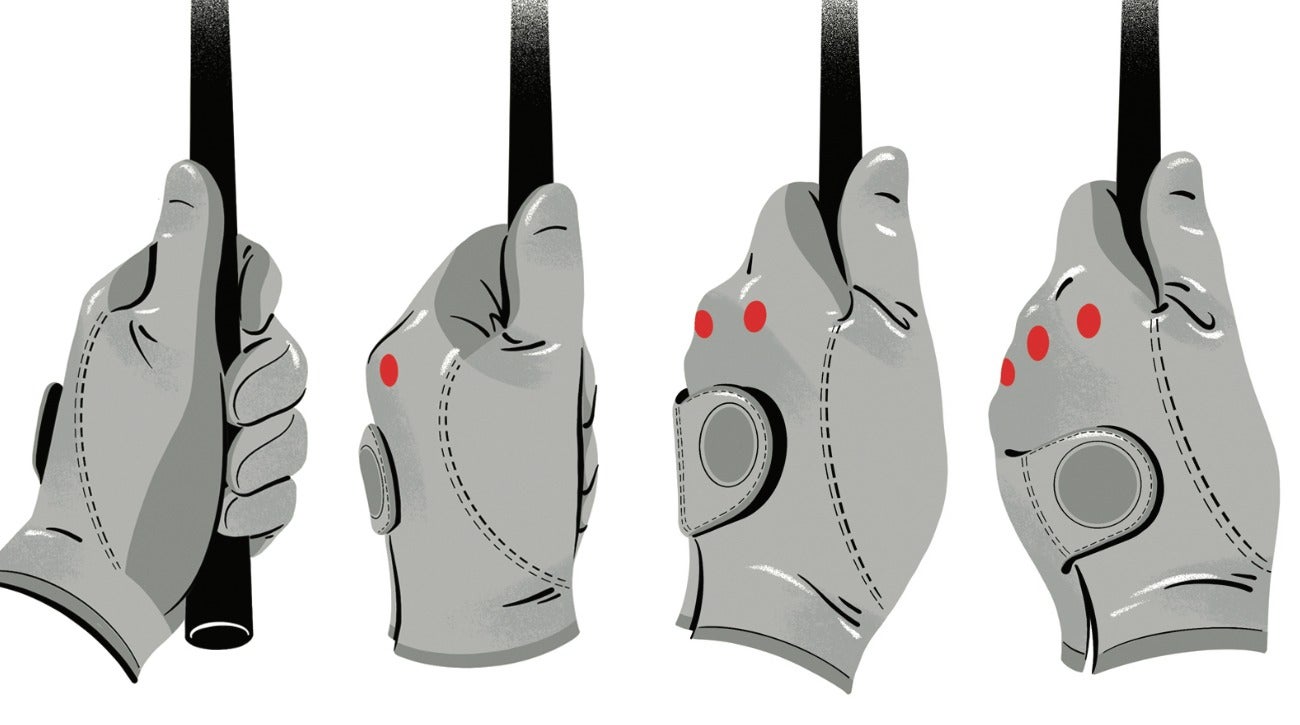
Golf grips come in all shapes, sizes and textures
With so many grip options available in the market today it can be confusing to figure out exactly which one is best for you, but by asking a few simple questions about your golf game and preferences, you can figure out what will be your best option.
How often do you play?
When it comes to golf grips you need to be realistic about how often you play and the conditions you play in. Similar to the tires on an F1 car, there are grips that are going to work better under different circumstances. You don’t want to be driving on a set of soft tires on in the rain going 200mph — sorry, my F1 brain took over there for a second — you don’t want to have grips intended for warm sunny days when you’re out playing in wet weather.

Rain over Liberty National
Getty
Similar to tires on a car, certain model golf grips will perform better under various conditions. A cord grip for example will offer better traction if your hands are prone to sweating, or you play in a humid climate. That same grip will perform when it’s nice out too but if you want something more like an all-season tire, an all-rubber grip like a Golf Pride Tour Velvet is the way to go.
Do you want comfort or control?
First and foremost, if you are a golfer that needs a grip to provide maximum comfort because of something like arthritis, you should always choose a grip that will make the game as enjoyable as possible. Not only will a soft grip offer more comfort but choosing the right size (more on that in a minute), will help you grip the club with the right amount of pressure and prevent discomfort.
One of the best examples that just hit the market is the Golf Pride CPX which is made from an extremely soft rubber compound and utilizes a texture that reduces hard pressure and vibration transmission.

Golf Pride CPX Grip
Golf Pride
On the other side of the spectrum if you are a golfer looking for maximum control a firm grip that has less torque is going to provide more feedback and give you the control you want. Apologies for all the car analogies, but think of a firm cord or hybrid grip like a firm suspension on a high-performance car; you’re going to feel a bit more of the road, but control and handling are going to be more performance driven.
Do you want help gripping more consistently?
Let’s be honest, who doesn’t want to be more consistent shot after shot?
Grips to help with alignment can be broken down into three main categories; no alignment (360 style grip) usually found on adjustable clubs off the rack, textured grips with visual aids, and grips with a raised section to provide visual and texture feedback to get your hands in the right position. Examples of the latter are the Calibrate grips from Lamkin, and the Align series from Golf Pride which feature a raised portion on the bottom of the grip to help you grip into the same spot in your hands shot after shot. This is similar to what is also known as a ribbed grip, but what separates the Align from a traditional ribbed grip is the feature is on the outside of the grip and offers an exterior texture that makes it easier to not only install but sit well in your hands.

Weak to strong grip styles
Golf.com
FUN AND HELPFUL FACT: although the rules of golf don’t allow you to use something extreme like a putter grip on your full swing clubs, there is NO rule which states the alignment of a ribbed or align style grip can’t be installed at the user’s preferred positioning. What I mean by that is, if you are a golfer that tends to use a strong or weak grip, you can have an alignment installed in an orientation to help you achieve a little extra consistency.
What size and shape is best for you
When it comes to finding the correct size grip, comfort is key. You have to choose the size that is going to make you the most comfortable regardless of your hand size. The golf grip is the only non-emotional connection you have with your golf clubs so it better feel comfortable and inspire confidence.
Other than the traditional size categories of undersized, standard, midsized, and jumbo, you can find in-between sizes by changing up the number of wraps of tape between the shaft and the grip before installation to make it bigger, or by stretching the grip on the shaft during installation to make it slightly smaller.
Beware though that by using extra layers of tape and stretching the grip, you are slightly reducing the wall thickness of the grip which can have a negative effect on the life of the grip. Just don’t tell that to Bubba Watson, who uses 11 extra wraps of tape under his grips to get them to his preferred size.

Bubba Watson swings his driver at the PGA Championship.
Getty Images
Last but not least is grip shape, which can be broken down into three main categories: standard taper, reduced taper, and zero-taper. A standard taper grip is going to feel smaller in the bottom hand and can potentially encourage a faster clubface rotation into impact. A reduced taper grip is as it sounds, a grip that still tapers but at a much slower rate into the bottom of the grip. This can be helpful to players who want to feel more of a connection with the club on the bottom hand. Zero taper grips offer extreme comfort to both the top and bottom hand and are often found in some of the softest designs to not only reduce grip pressure but also help reduce any unwanted vibration for improved comfort.









